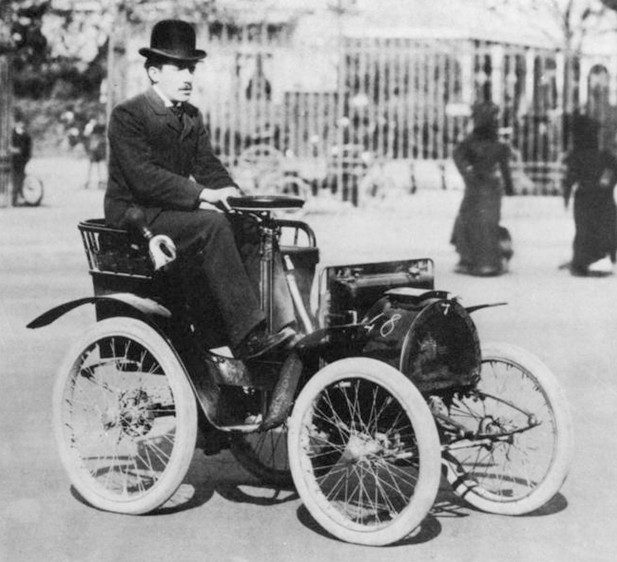
The history of the automobile company Renault
Content
- When did Renault start making cars?
- What happened to Renault during World War I?
- Renault in the late 1920s and 1930s
- What happened to Renault during World War II?
- When did Louis Renault go to jail?
- Post-war Renault
- When did Renault partnered with American Motors Corporation?
- When was Georges Besse killed?
- When did Renault release the Clio?
- When was Renault privatized?
- When did Renault form an alliance with Nissan?
- Renault and electric vehicles
Renault is one of the most famous brands in Europe and also one of the oldest car manufacturers.
Groupe Renault is an international manufacturer of cars, vans, as well as tractors, tankers and rail vehicles.
In 2016, Renault was the world's ninth largest automaker by production volume, and Renault-Nissan-Mitsubishi-Alliance was the world's fourth largest automaker.
But how did Renault evolve into the car it is today?
When did Renault start making cars?
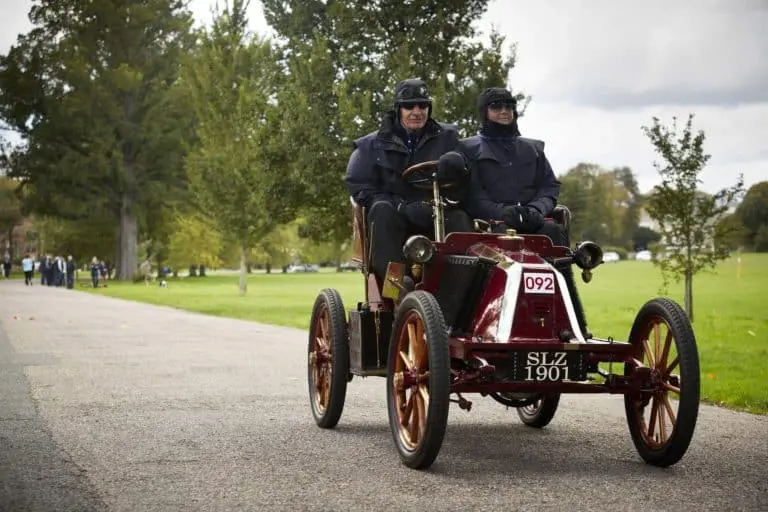
Renault was founded in 1899 as Societe Renault Freres by brothers Louis, Marcel and Fernand Renault. Louis had already designed and built many prototypes while his brothers refined their business skills by working for their father's textile firm. It worked great, Louis was in charge of design and production, and the other two brothers ran the business.
Renault's first car was the Renault Voiturette 1CV. It was sold to a friend of their fathers in 1898.
In 1903, Renault began producing its own engines, as they had previously bought from De Dion-Bouton. Their first volume sale occurred in 1905 when the Societe des Automobiles de Place bought Renault AG1 vehicles. This was done to create a fleet of taxis, which were later used by the French military to transport troops during World War I. By 1907, part of the London and Paris taxis were built by Renault. They were also the top-selling foreign brand in New York in 1907 and 1908. At the time, however, Renault cars were known as luxury goods. The smallest Renaults sold for F3000 francs. This was the salary of an average worker for ten years. They began mass production in 1905.
It was around this time that Renault decided to take up motorsport and made a name for itself with success in the first city-to-city races in Switzerland. Both Louis and Marseille raced, but Marseille died in an accident during the Paris-Madrid race in 1903. Louis never raced again, but the company continued to race.
By 1909, Louis was the only remaining brother after Fernand died of illness. Renault was soon renamed the Renault Automobile Company.
What happened to Renault during World War I?
During World War I, Renault began producing ammunition and engines for military aircraft. Interestingly, the first Rolls-Royce aircraft engines were Renault V8 units.
The military designs were so popular that Louis was awarded the Legion of Honor for his contributions.
After the war, Renault expanded to produce agricultural and industrial machinery. The Type GP, Renault's first tractor, was produced from 1919 to 1930 based on the FT tank.
Renault, however, struggled to compete with smaller and more affordable cars, the stock market was slowing and the workforce was slowing the company's growth. So, in 1920, Louis signed one of the first distribution contracts with Gustave Göde.
Until 1930, all Renault models had a distinctive front end shape. This was caused by the location of the radiator behind the engine to give it a "charcoal bonnet". This changed in 1930 when the radiator was placed at the front in the models. It was around this time that Renault changed its badge to the diamond shape that we know as today.
Renault in the late 1920s and 1930s
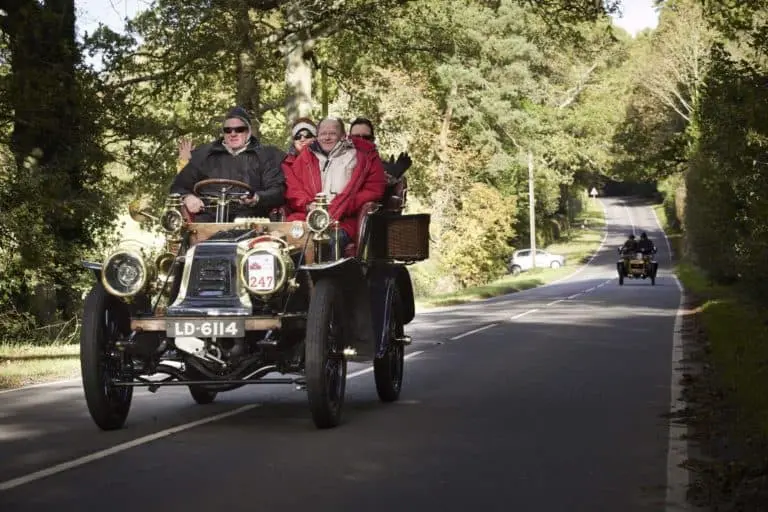
In the late 1920s and throughout the 1930s, the Renault series was produced. These include 6cv, 10cv, Monasix and Vivasix. In 1928, Renault produced 45 vehicles. Smaller cars were the most popular and the larger ones, 809 / 18cv, were the least produced.
The UK market was important for Renault as it was quite large. The modified vehicles were sent from Great Britain to North America. By 1928, however, sales in the United States were near zero due to the availability of their competitors such as the Cadillac.
Renault also continued to produce aircraft engines after World War I. In the 1930s, the company took over the production of Caudron aircraft. He also acquired a stake in Air France. Renault Cauldron aircraft set several world speed records in the 1930s.
It was around this time that Citroen surpassed Renault as the largest car manufacturer in France.
This was due to the fact that Citroen models were more innovative and popular than the Renaults. However, the Great Depression erupted in the mid-1930s. While Renault abandoned the production of tractors and weapons, Citroen was declared bankrupt and was later acquired by Michelin. Renault then reclaimed the trophy of the largest French car manufacturer. They will maintain this position until the 1980s.
Renault, however, was not immune to the economic crisis and sold Coudron in 1936. This was followed by a series of labor disputes and strikes at Renault that spread to the auto industry. These disputes were ended, causing more than 2000 people to lose their jobs.
What happened to Renault during World War II?
After the Nazis took France, Louis Renault refused to produce tanks for Nazi Germany. Instead, he built trucks.
In March 1932, the British Air Force launched low-level bombers at the Billancourt plant, the most single-target bombers in the entire war. This resulted in significant damage and high civilian casualties. Although they tried to rebuild the plant as quickly as possible, the Americans bombed it several more times.
After World War II, the plant reopened. However, in 1936 the plant fell victim to violent political and industrial unrest. This came to light as a result of the rule of the Popular Front. The violence and conspiracy that followed the liberation of France haunted the factory. The Council of Ministers took over the plant under the chairmanship of de Gaulle. He was anti-communist and politically, Billancourt was a bulwark of communism.
When did Louis Renault go to jail?
The interim government accused Louis Renault of collaborating with the Germans. This was in the post-liberation era, and extreme accusations were common. He was advised to act as a judge, and he appeared before a judge in September 1944.
Together with several other French leaders of the automobile movement, he was arrested on September 23, 1944. His skill in managing strikes in the previous decade meant that he had no political allies and no one came to his aid. He was sent to prison and died on October 24, 1944, awaiting trial.
The company was nationalized after his death, the only factories permanently expropriated by the French government. The Renault family tried to reverse the nationalization, but to no avail.
Post-war Renault
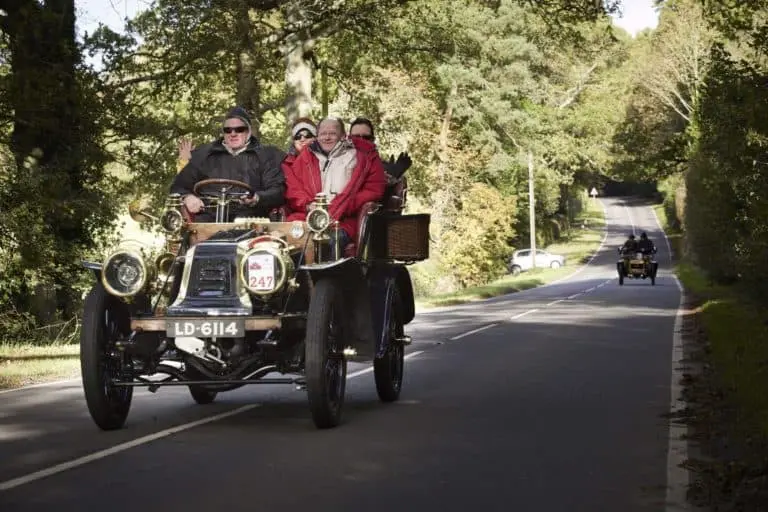
During the war, Louis Renault secretly developed the 4CV rear engine. It was launched under the leadership of Pierre Lefoschot in 1946. It was a strong contender for the Morris Minor and Volkswagen Beetle. Over 500000 copies were sold and production remained in production until 1961.
Renault debuted its flagship model, the 2-liter 4-cylinder Renault Fregate in 1951. This was followed by the Dauphine model, which sold well overseas, including Africa and North America. However, it quickly became outdated compared to the likes of the Chevrolet Corvair.
Other cars produced during this period include the Renault 4, which competed with the Citroen 2CV, as well as the Renault 10 and the more prestigious Renault 16. It was a hatchback produced in 1966.
When did Renault partnered with American Motors Corporation?
Renault had a joint partnership with Nash Motors Rambler and American Motors Corporation. In 1962, Renault assembled the Rambler Classic sedan disassembly kits at its plant in Belgium. Rambler Renault was an alternative to Mercedes Fintail cars.
Renault partnered with American Motors, buying a 22,5% stake in the company in 1979. The R5 was the first Renault model to be sold through AMC dealerships. AMC faced some problems and found itself on the verge of bankruptcy. Renault bailed out AMC in cash and ended up with 47,5% of AMC. The result of this partnership is the marketing of Jeep vehicles in Europe. Renault wheels and seats were also used.
After all, Renault sold AMC to Chrysler following the assassination of Renault chairman Georges Besse in 1987. Renault imports ceased after 1989.
During this period Renault also established subsidiaries with many other manufacturers. This included Dacia in Romania and South America, as well as Volvo and Peugeot. The latter were technological collaborations and led to the creation of the Renault 30, Peugeot 604 and Volvo 260.
When Peugeot acquired Citroen, the partnership with Renault was curtailed, but the co-production continued.
When was Georges Besse killed?
Besse became head of Renault in January 1985. He joined the company at a time when Renault was not profitable.
At first, he was not very popular, closed factories and laid off more than 20 workers. Bess advocated a partnership with AMC, which not everyone agreed on. He also sold many assets, including his stake in Volvo, and almost completely pulled Renault out of motorsport.
However, Georges Besse completely turned the company around and reported profits just months before his death.
He was killed by Action Directe, an anarchist militant group, and two women were arrested and charged with his murder. They claimed that he was killed because of the reforms at Renault. The murder was also linked to negotiations over the nuclear company Eurodif.
Raymond Levy replaced Bess, who continued to cut the company. In 1981, the Renault 9 was released, which was voted European Car of the Year. It sold well in France but was overtaken by the Renault 11.
When did Renault release the Clio?
Renault Clio was released in May 1990. It was the first model to replace digital identifiers with nameplates. It was voted European Car of the Year and was one of the best-selling cars in Europe in the 1990s. He has always been a big seller and is largely credited with restoring Renault's reputation.
The second generation Clio was released in March 1998 and was rounder than its predecessor. In 2001, a major facelift was carried out, during which the appearance was changed and a 1,5-liter diesel engine was added. Clio was in its third phase in 2004, and its fourth in 2006. It had a restyled rear as well as an improved specification for all models.
The current Clio is in Stage 2009 and was released in April XNUMX with a redesigned front end.
In 2006, it was again named European Car of the Year, making it one of three vehicles to be awarded this title. The other two were Volkswagen Golf and Opel (Vauxhall) Astra.
When was Renault privatized?
Plans to sell the shares to state investors were announced in 1994, and by 1996 Renault was fully privatized. This meant that Renault could return to the markets of Eastern Europe and South America.
In December 1996, Renault partnered with General Motors Europe to develop light commercial vehicles, starting with the second generation Trafic.
However, Renault was still looking for a partner to cope with industry consolidation.
When did Renault form an alliance with Nissan?
Renault entered into negotiations with BMW, Mitsubishi and Nissan, and an alliance with Nissan began in March 1999.
The Renault-Nissan Alliance was the first of its kind to involve Japanese and French brands. Renault initially acquired a 36,8% stake in Nissan, while Nissan in turn acquired a 15% non-voting stake in Renault. Renault was still a stand-alone company, but partnered with Nissan to reduce costs. They also conducted research together on topics such as zero-emission transport.
Together, the Renault-Nissan Alliance controls ten brands, including Infiniti, Dacia, Alpine, Datsun, Lada and Venucia. Mitsubishi joined the Alliance this year (2017) and together they are the world's leading manufacturer of plug-in electric vehicles with nearly 450 employees. Together they sell over 000 in 1 vehicles worldwide.
Renault and electric vehicles
Renault was the # 2013 selling electric vehicle in XNUMX.
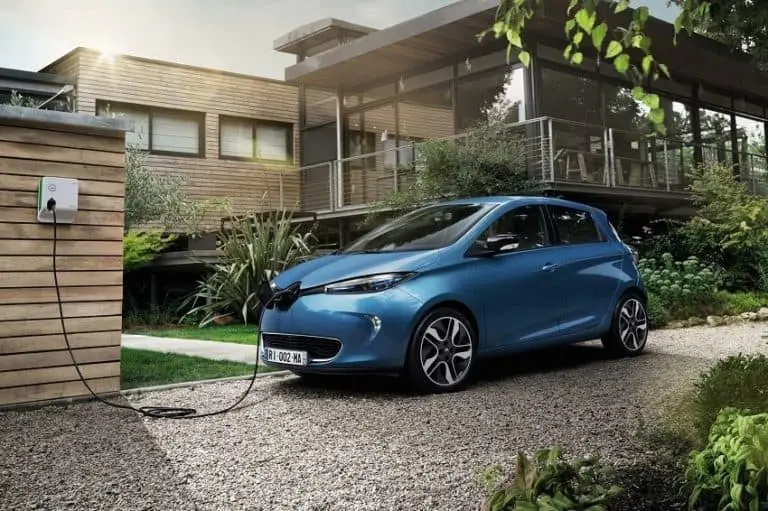

Renault entered into zero-emission agreements in 2008, including in Portugal, Denmark and the US states of Tennessee and Oregon.
The Renault Zoe was the best-selling all-electric car in Europe in 2015 with 18 registrations. The Zoe continued to be the top selling electric car in Europe in the first half of 453. Zoe accounts for 2016% of their global electric vehicle sales, Kangoo ZE for 54% and Twizy for 24%. sales.
This really brings us to the present day. Renault is hugely popular in Europe and their electric vehicles are becoming more popular as technology advances. Renault plans to introduce autonomous vehicle technology by 2020, and the Zoe-based Next Two was unveiled in February 2014.
Renault continues to have an important place in the automotive industry and we think they will continue to do so for some time.
